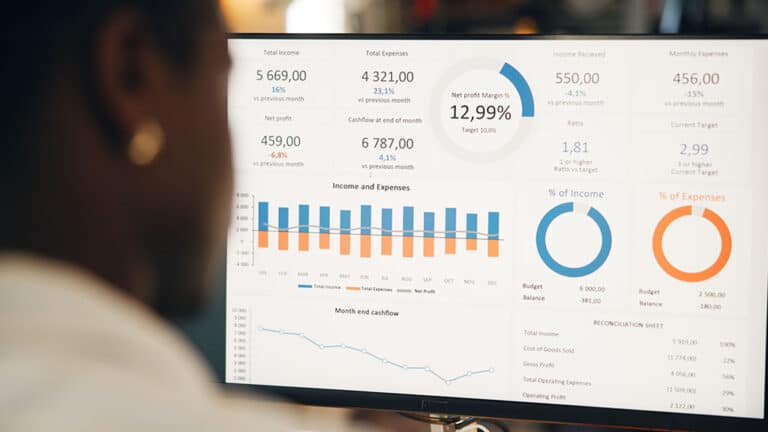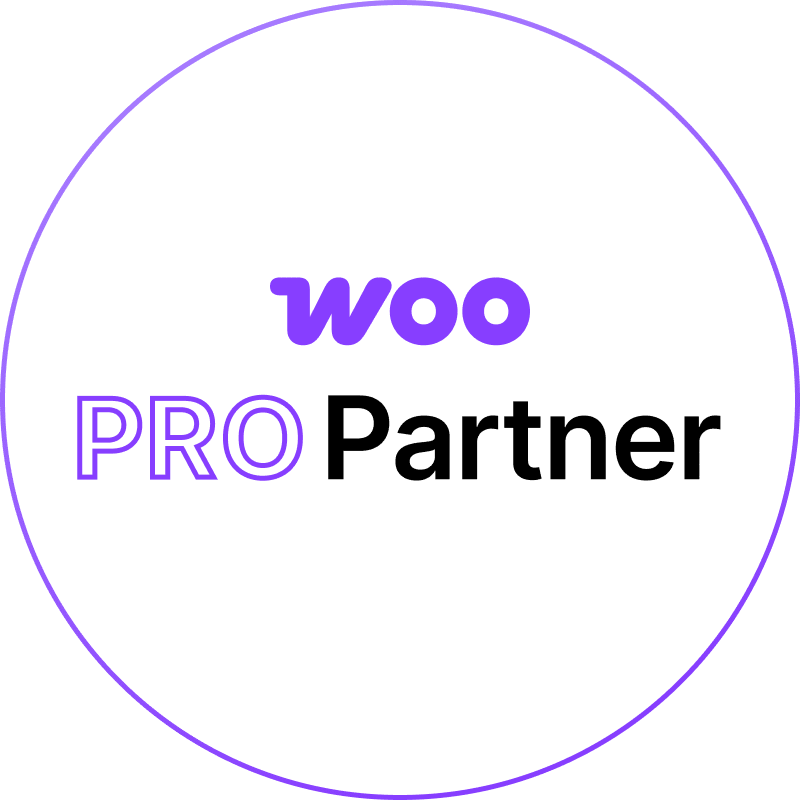How to Use PPC for Seasonal E-Commerce Success
Seasonal events present e-commerce businesses with some of the most lucrative opportunities of the year. From Black Friday and Cyber Monday to back-to-school shopping and holiday gift-giving, these periods bring heightened consumer demand, making them a prime time to boost sales and revenue. However, capturing the attention of customers during these busy times requires a strategic marketing approach. That’s where Pay-Per-Click (PPC) advertising comes into play.
PPC campaigns allow e-commerce businesses to target customers actively searching for seasonal products, ensuring that their ads appear prominently during peak periods. Unlike organic efforts, which can take time to build visibility, PPC provides instant reach, allowing businesses to capitalize on short-term opportunities. When paired with a solid strategy, PPC can help drive traffic, increase conversions, and achieve impressive returns on investment during key shopping seasons.
In this guide, we’ll explore how to use PPC effectively for seasonal e-commerce success. By identifying key seasonal opportunities, planning campaigns in advance, and leveraging the right strategies, your business can thrive during the busiest times of the year. For businesses looking for expert assistance, partnering with PPC management services can ensure every detail is optimized for maximum impact.
Identify Key Seasonal Opportunities
The first step in using PPC for seasonal success is identifying the specific events, holidays, or timeframes that matter most to your business and audience. While major holidays like Christmas, Valentine’s Day, and Mother’s Day are obvious opportunities, don’t overlook smaller or industry-specific events that align with your niche. For example, a fitness brand could focus on New Year’s resolutions, while a fashion retailer might emphasize back-to-school shopping.
Analyzing your historical sales data is a crucial part of this process. Look for patterns in customer behavior during previous years to identify peak periods. For example, if your sales typically spike in November due to Black Friday promotions, it’s essential to allocate a significant portion of your budget and resources to that timeframe. Similarly, consider leveraging tools like Google Trends to explore seasonal search patterns and uncover additional opportunities.
It’s also important to understand your audience’s needs and preferences during each season. For example, holiday shoppers often prioritize discounts and fast shipping, while back-to-school shoppers may be more focused on product availability and practicality. Aligning your PPC campaigns with these seasonal priorities ensures your ads resonate with your target audience.
By identifying the key seasonal opportunities relevant to your business, you can create a focused strategy that maximizes your potential to attract and convert customers during high-demand periods.
Plan Campaigns in Advance
Once you’ve identified your key seasonal opportunities, it’s time to start planning your PPC campaigns well in advance. Successful seasonal campaigns don’t happen overnight—they require preparation, testing, and a clear strategy to ensure everything runs smoothly during the peak shopping period.
Begin by setting clear goals for each campaign. Are you aiming to boost overall sales, clear out seasonal inventory, or attract new customers? Defining specific objectives will help guide your campaign strategy and make it easier to measure success. For example, if your goal is to increase revenue from holiday gift sets, you might focus your PPC efforts on keywords like “Christmas gift baskets” or “holiday gift ideas.”
Next, allocate your budget based on expected demand and past performance. Seasonal campaigns often require a higher investment due to increased competition, so be prepared to adjust your spending accordingly. For example, if you know Black Friday consistently drives significant sales, allocate a larger portion of your budget to ensure your ads remain competitive throughout the day.
Pre-launch activities are also critical for seasonal success. Use early promotions or teaser ads to build awareness and excitement. For example, a retailer running a holiday sale might launch countdown ads highlighting the upcoming discounts, creating anticipation among potential customers. These pre-launch efforts help you gather data, test ad performance, and refine your strategy before the peak period begins.
By planning your campaigns in advance, you can avoid last-minute scrambling and ensure that every element of your PPC strategy is optimized for success when the season arrives.
Use Seasonal Keywords
The success of a seasonal PPC campaign largely depends on using the right keywords. Seasonal keywords are search terms that align with your audience’s behavior and needs during specific times of the year. By targeting these high-intent queries, your ads can appear in front of users who are actively looking for seasonal products, making them more likely to convert.
Start by researching keywords that are directly tied to the season or event you’re focusing on. For example, if you’re running a campaign for Black Friday, keywords like “Black Friday deals,” “holiday discounts,” or “best Black Friday sales” are essential. For niche seasonal events, such as back-to-school shopping or Valentine’s Day, consider long-tail keywords like “back-to-school supplies for teens” or “Valentine’s Day gifts for her.” These terms tend to have less competition while attracting highly relevant traffic.
Using dynamic keyword insertion can further enhance your seasonal campaigns. This feature allows your ads to automatically include the user’s search term in the ad copy, making your ad more personalized and increasing click-through rates (CTR). For instance, if someone searches for “Christmas gifts under $50,” your ad headline could dynamically display “Shop Christmas Gifts Under $50.”
It’s also essential to continuously monitor and update your keyword list as the season progresses. Trends and consumer behavior can shift, and staying on top of these changes ensures your campaign remains relevant. Tools like Google Trends can help you identify rising search terms, while your campaign’s search term report provides insights into actual queries triggering your ads.
By leveraging seasonal keywords strategically, you’ll ensure your ads align with user intent, driving higher engagement and conversions.
Optimize Ad Copy for Seasonal Promotions
During seasonal campaigns, your ad copy must stand out amidst increased competition. With so many businesses vying for attention, it’s essential to craft compelling, relevant, and timely ad copy that resonates with your audience and motivates them to act.
Highlighting your seasonal promotions is one of the most effective ways to capture attention. Include offers like discounts, limited-time deals, free shipping, or bundled packages directly in your headlines and descriptions. For instance, “Up to 50% Off Black Friday Deals – Shop Now!” or “Free Shipping on All Holiday Orders” immediately communicates value and urgency.
Creating a sense of urgency is especially important during seasonal campaigns. Phrases like “Limited Stock Available,” “Ends Tonight,” or “Only a Few Left” encourage users to act quickly. Countdown timers in ad copy can further enhance this effect, especially for promotions with a specific end date, like “Sale Ends in 2 Days!”
Personalization also plays a key role in seasonal ad copy. Tailor your messaging to the target audience and their specific needs. For example, if your campaign targets parents during the back-to-school season, your ad copy could say, “Affordable Back-to-School Supplies for Busy Parents – Shop Today.”
A/B testing is critical to optimizing your seasonal ad copy. Experiment with different headlines, CTAs (calls to action), and promotional language to determine what resonates most with your audience. Regularly analyze performance metrics like CTR and conversion rates to identify top-performing ads and refine your strategy.
By focusing on seasonal promotions, urgency, and personalization, you can create ad copy that captures attention and drives meaningful results during peak shopping periods.
Leverage Google Shopping Ads
For e-commerce businesses, Google Shopping Ads are an invaluable tool for seasonal success. These visually rich ads showcase your products directly in search results, providing users with all the information they need—images, prices, product names, and reviews—before they even click. This format is particularly effective during seasonal campaigns when users are actively comparing options and looking for the best deals.
To maximize the impact of Google Shopping Ads, ensure your product feed is optimized and up-to-date. Include accurate information about seasonal inventory, pricing, and promotional details. For example, if you’re running a holiday sale, update your product feed to reflect discounted prices and any relevant offers, like “Free Gift Wrapping Included.”
High-quality images are crucial for attracting clicks. Showcase your products in the best light, ensuring that images are clear, visually appealing, and relevant to the season. For example, a clothing retailer promoting winter apparel should feature cozy sweaters or jackets styled for the colder months.
Product titles and descriptions also play a significant role in driving performance. Use descriptive, keyword-rich titles that highlight seasonal relevance, such as “Women’s Holiday Party Dress – Red Velvet” or “Kids’ Back-to-School Backpack – Durable & Stylish.” These details help your products rank for seasonal searches and increase the likelihood of conversions.
Don’t forget to highlight trust factors like product ratings and reviews. Positive reviews can make your products stand out in a competitive field, providing social proof that encourages users to choose your store over others.
By leveraging Google Shopping Ads effectively, you can showcase your seasonal products to a highly motivated audience, increasing traffic, engagement, and sales during critical shopping periods.
Implement Dynamic Remarketing
Dynamic remarketing is one of the most powerful tools for maximizing the effectiveness of your seasonal PPC campaigns. This strategy allows you to re-engage users who have interacted with your website but didn’t complete a purchase. By serving them personalized ads featuring the specific products they viewed, you keep your brand top-of-mind and encourage them to return to finalize their purchase.
During seasonal campaigns, dynamic remarketing is especially effective because it targets users who are actively shopping for gifts or deals. For example, if a potential customer browsed holiday gift sets but left without buying, you can serve them an ad showcasing those exact gift sets, along with an added incentive like “Free Shipping on Orders Over $50.” These personalized ads resonate more with the user, increasing the chances of conversion.
Adding urgency to your dynamic remarketing ads can make them even more impactful. Highlight seasonal deadlines, such as “Order by Dec. 20 for Christmas Delivery,” or feature countdowns for promotions like “Sale Ends in 2 Days.” This sense of urgency motivates users to act quickly before the opportunity passes.
Segment your audience based on their behavior for better targeting. For example, users who abandoned their cart might see ads offering a discount to complete their purchase, while those who only browsed products might see ads promoting your bestsellers or special seasonal deals. By tailoring your messaging to different user segments, you can address their specific needs and increase your chances of converting them into customers.
Adjust Bidding Strategies During Peak Times
Seasonal campaigns often come with increased competition, as many businesses are vying for the same audience. To ensure your ads maintain visibility during these critical periods, it’s essential to adjust your bidding strategies to align with consumer demand and market trends.
One effective approach is to increase bids on high-performing keywords during peak shopping times. For example, if you’re running a campaign for Black Friday, raise your bids for terms like “Black Friday deals” or “holiday sales” to improve your ad’s position in search results. Higher visibility can lead to more clicks and conversions, especially when demand is at its highest.
Automated bidding strategies like Target ROAS (Return on Ad Spend) or Maximize Conversions can be particularly useful during seasonal campaigns. These strategies leverage machine learning to adjust bids in real time, ensuring your ads appear in front of the most relevant audience. For instance, if a user is likely to convert based on their behavior, automated bidding will increase your bid to maximize your chances of winning the auction.
Time-based bid adjustments are another valuable tactic. Analyze when your audience is most active and increase bids during those hours or days. For example, if data shows that your sales peak in the evenings or on weekends, allocate a larger portion of your budget to those timeframes.
Keep a close eye on your budget as you adjust your bids. Seasonal campaigns often require higher spending to compete effectively, so ensure your budget is sufficient to support increased bid levels without exhausting your funds too quickly. Regularly monitor performance metrics to ensure your adjustments are driving results and delivering a strong return on investment.
Monitor Campaign Performance in Real Time
Seasonal PPC campaigns require constant monitoring and optimization to ensure success. Unlike evergreen campaigns, where performance can be evaluated over weeks or months, seasonal campaigns operate within a limited timeframe, making real-time adjustments critical.
Start by tracking key performance metrics such as click-through rate (CTR), cost per click (CPC), conversion rate, and return on ad spend (ROAS). These metrics provide insights into how well your campaign is performing and where improvements may be needed. For example, if your CTR is low, consider refining your ad copy or testing new headlines to make your ads more engaging.
Identify top-performing keywords and allocate more budget to those that are driving conversions. Conversely, pause or reduce spending on underperforming keywords to optimize your budget. Use the search term report to uncover new opportunities for seasonal keywords that might not have been included in your initial strategy.
A/B testing is another essential component of real-time optimization. Test different ad variations, CTAs, and promotions to determine what resonates most with your audience. For example, compare ads highlighting free shipping against those offering a discount to see which generates better results.
Additionally, monitor your competitors’ activity. If you notice a competitor offering aggressive discounts or promotions, consider adjusting your strategy to remain competitive. This might include matching their offers or emphasizing unique selling points, such as superior customer service or exclusive products.
By monitoring and optimizing your campaign performance in real time, you can adapt to changing market conditions and maximize the impact of your seasonal PPC efforts.
Evaluate Performance Post-Season
The end of a seasonal campaign doesn’t mean the work is over. Evaluating your campaign’s performance is a crucial step in understanding what worked, what didn’t, and how you can improve for future seasonal efforts.
Start by analyzing your campaign metrics. Review data on CTR, CPC, conversion rates, and ROAS to determine how well your ads performed. Compare these metrics to your initial goals to assess whether you met your targets. For example, if your goal was to achieve a 5:1 ROAS during Black Friday, evaluate whether your campaign reached or exceeded that benchmark.
Look for patterns in audience behavior. Identify which keywords, ad variations, and targeting strategies delivered the best results. For instance, if dynamic remarketing generated the highest conversions, consider allocating more budget to this tactic in your next seasonal campaign. Similarly, if certain promotions or CTAs underperformed, refine your messaging for future efforts.
Customer insights are another valuable takeaway from post-season analysis. Analyze which products were most popular, which demographics converted most frequently, and how user behavior aligned with your predictions. Use this information to refine your audience targeting and product offerings for upcoming campaigns.
Finally, document your findings and create a playbook for future seasonal campaigns. Include lessons learned, best practices, and areas for improvement. By building on past successes and addressing challenges, you’ll be better prepared to execute even more effective campaigns in the future.
Evaluating performance post-season not only helps you improve future efforts but also ensures that your PPC strategy continues to evolve and deliver results year after year.Ready to take your PPC campaigns to the next level? Contact Zen Agency today to discover how our expert PPC management services can help you drive targeted traffic, increase conversions, and maximize your ROI. Let’s turn your digital ads into measurable success!

















